I’ve been living, working, and fishing in Central America since 2003 and while San Jose, Costa Rica is home, during my time here I’ve traveled to all seven Central American countries (in addition to another 20 throughout the rest of the world). I’ve been incredibly fortunate to earn a living doing what I love and I’ve been even luckier to have fished with many of Central America’s best captains and caught everything from marlin at the FADs in Costa Rica, yellow-fin tuna on the Hannibal Bank in Panama, and bonefish, permit, and tarpon on the fly in Belize. Despite the countless hours on the water and fish I’ve caught, the one regret I have is that I didn’t fish MORE. Thanks to Okuma I found a way to fix that problem, so read our Fishing Tackle Review – Okuma Nomad Travel Rods and see what a game changer they have been!
Webster’s dictionary defines “obsession” as ‘a persistent disturbing preoccupation with an idea or feeling; compelling motivation,‘ so I easily self diagnosed myself by the fact that even when I’m on a fishing trip all I can think about is fishing before or after the boat leaves the dock. For the past decade and a half I’ve been traveling around Central America to get to know the best destinations, visit the top fishing lodges and hotels so our guests are well taken care of, and of course I’ve fished a ton to sort through the good, the bad, and the ugly. My ever-present Achilles Heel throughout these travels was that I couldn’t bring my fishing gear with me wherever I went, which is why despite the countless days I’ve fished here I felt like I was missing out on opportunities to fish even more. All that changed when I shared a booth at the Fred Hall Show in March 2015 with my good buddy Shea McIntee and his Stoked on Fishing crew. They were raffling off a three piece travel rod from one of their sponsors, Okuma, and that’s when I had my Mike Meyer’s moment from ‘Wayne’s World’ – “It will be mine, oh yes. It will be mine.”
After learning more about my business and seeing the shows we filmed with Stoked on Fishing, last March Okuma shipped me a box of goodies including a Nomad Travel Rod, a Nomad Inshore Travel Rod, and host of Savage Gear’s top saltwater lures like their Panic Prey V2 and Salty Freestylers. We agreed that few people could put these Nomad Travel Rods to the test better than I with the transient, non-stop lifestyle I lead. With my lake house in northern Wisconsin and an international sport fishing travel agency in Central America I’d be able to fish these rods for literally hundreds of freshwater and saltwater species, and I couldn’t wait to see how’d they’d perform.
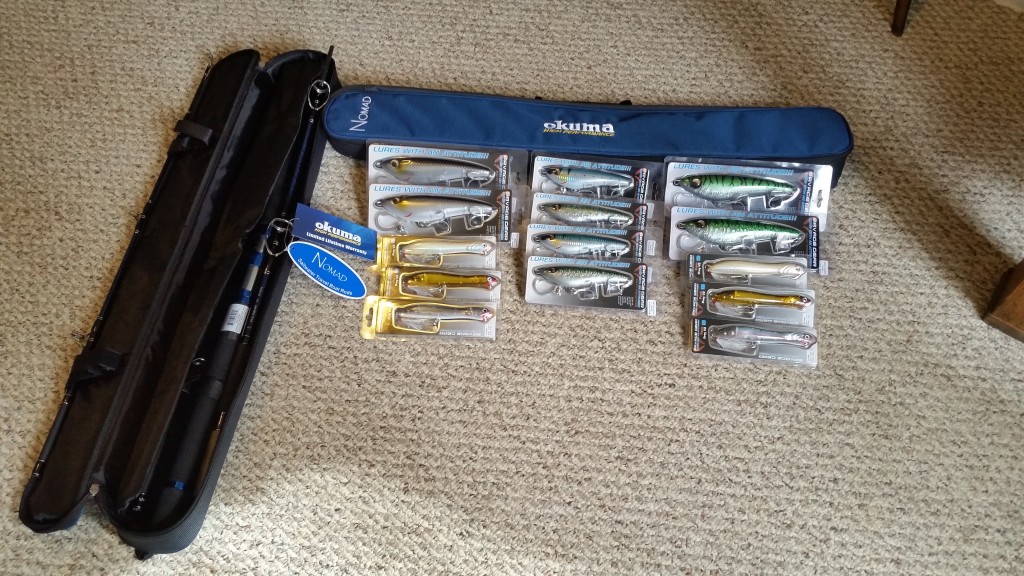
I spent most of last summer and fall back in Wisconsin in preparation for my wedding in September, so I immediately started putting miles on these rods with regular fishing trips back down to Central America. A trip to Panama in May, a trip to Belize in June, my wedding in Michigan in September, a trip to Costa Rica in November, and the finally moving back to Costa Rica full time after the holidays in December – these rods could have earned a free flight in 2016. By my calculation in their first year alone they have already traveled about 19,000 miles with me, so my first observation is that they are sturdy, durable, and quality made. Each travel rod comes in a padded, water resistant case that measures 32″ long by 5″ wide and only weighs about 19 oz so perhaps most importantly they easily fit inside my checked luggage or in the overhead bin when I fly. If you were born a travel rod, you’d have to assume that my two are thinking they won the lottery having me as their owner because they’ve already fished the Hannibal Bank in Panama, the second longest barrier reef in the world in Belize’s Mesoamerican Reef, the fishing mecca of Quepos in Costa Rica, and of course dozens of gorgeous rivers & lakes throughout the Midwest.
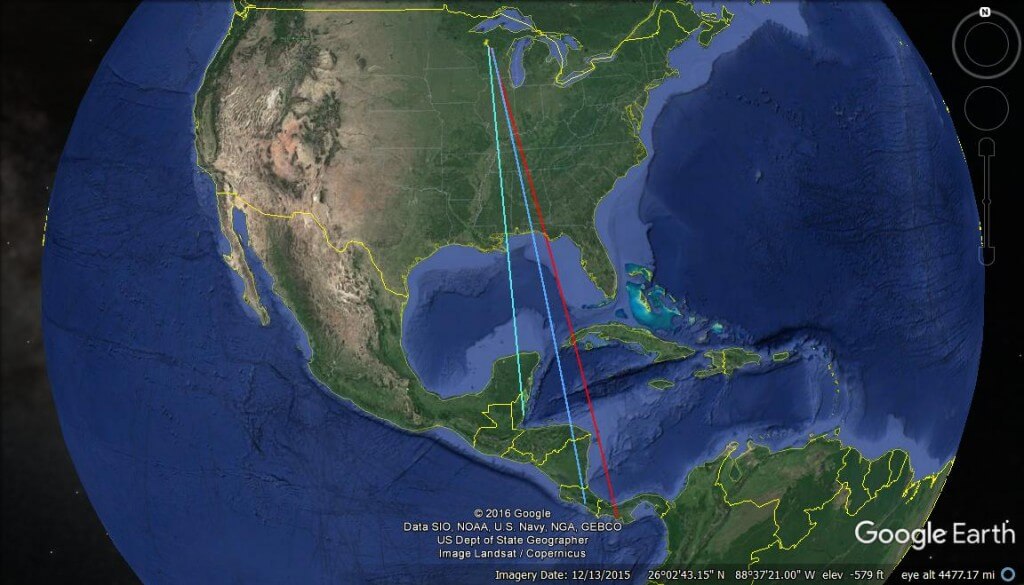
The Okuma Nomad Travel Rods were built to give anglers a one piece feel and performance while still giving them the flexibility to travel anywhere. They are designed with a European-style spigot ferrule connection which gives them a rock solid feel as the ferrule joint goes farther into the blank giving it more strength and durability. The ferrule joint on the Nomad Travel Rod is about 3.5″ long, so even when the blank is attached it will not slide flush onto the connecting joint but rather leave a small gap of about half an inch.
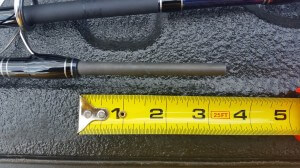
Although it may look unsettling, that is completely normal as simple math tells you that 3″ of the ferrule joint is still inside the blank. The rods themselves are durable graphite blanks with carbon outer wraps that when assembled measure 7’0″ long yet easily break down when it’s time to travel. They are intelligently designed with ALPS guides and zirconium inserts and ALPS aluminum reel seats (take that saltwater!) on the two spinning rod models I have. The bigger Nomad Travel Rod features heavy duty foam fore and rear grips, an anodized aluminum gimbal, and a protective butt cap which allows you to either leave it in a rod holder while trolling or stand up fight comfortably when a belt isn’t handy. The Nomad Inshore Travel Rod comes with durable cork fore and rear grips and a fixed rubber butt only. Last but not least, arguably my favorite feature is that both rods come with two different tip sections (one light and one heavy) to give you versatility and better feel no matter what you are fishing for. Oh, did I mention that the rods come with a limited lifetime warranty?
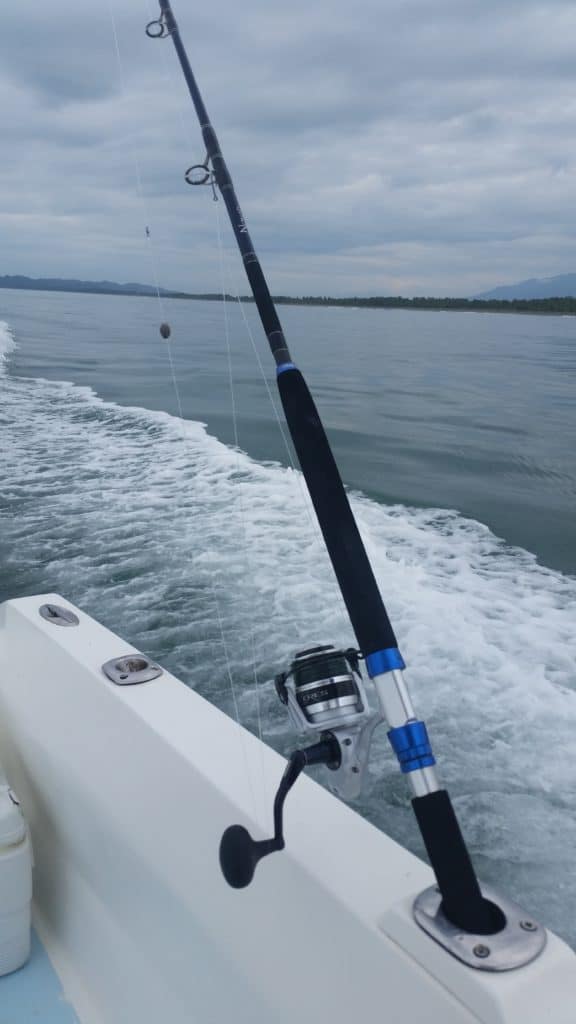
Details and specs aside, the fun part was of course field testing them throughout the Midwest and Central America all year. I paired the larger Nomad Travel Rod with a brand new Okuma Z-65S spinning reel spooled with 50 lb braided line and the lighter Nomad Inshore Travel Rod with an older Penn 440SSg spinning reel spooled with 30 lb super slick braided line. The first stop was in Panama last May where I threw them right into the fire with a week of fishing on our 70′ mothership. Anchored in the protected bays of Coiba Island National Park fifty miles off the coast of Panama, the mothership let me test the rods at hot spots like the Hannibal Bank, Montousa Island, and Coiba Island itself. All week I trolled, jigged, and chucked poppers without any issues or noticeable disadvantage from the one piece rods the mothership was outfitted with. While I didn’t land a cow tuna or bone crushing cubera snapper on the Okuma Nomad Travel Rod, the medium-heavy tip more than held it’s own against football yellow-fin tuna, jacks, and a nice 25 lb dorado and it could have easily handled more fish. I used the Inshore Travel Rod around Coiba Island and while kayak fishing and was pleasantly surprised by the soft feel of the tip when jigging and retrieving crank baits. The rods passed their first test with flying colors as I racked up the following species fishing in Panama for two weeks:
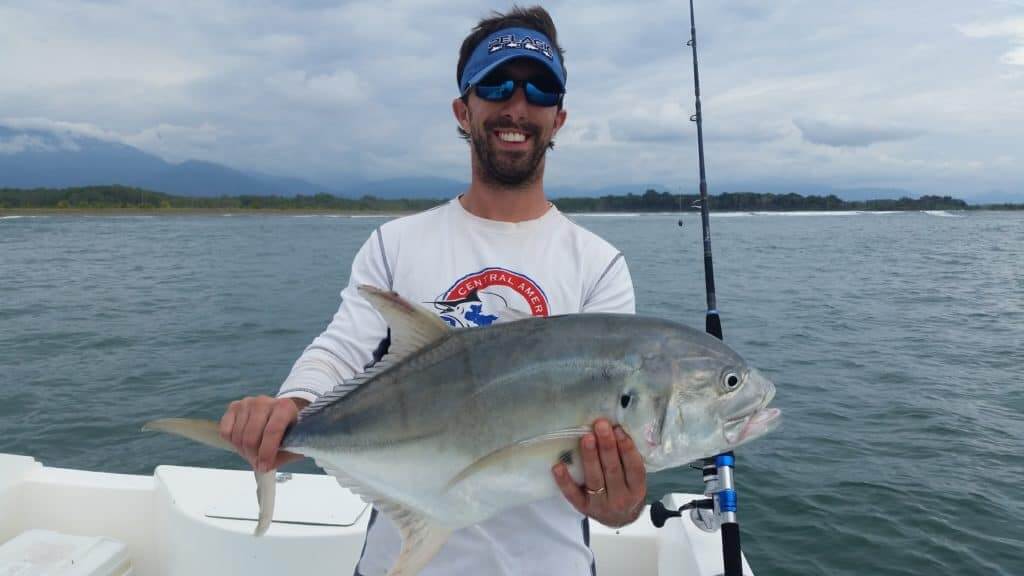
PANAMA: dorado ~ yellow-fin tuna ~ red snapper ~ lane snapper ~ sierra mackerel ~ golden trevally ~ jack crevalle ~ horse-eye jack ~ bonito ~ houndfish ~ needlefish ~ blacktip reef shark
A month later I was in Belize and while I spent most of my time fly fishing the flats, I also spent a few days reef fishing out at the Mesoamerican Reef. Most of the fishing I’ve done in Central American has been on the Pacific Coast so the Caribbean still held a lot of mystery for me, and what better place to rack up more species than the world’s second longest barrier reef. My favorite guide, Martin, and I went outside the reef and found birds and it didn’t take long to find the tuna they were working with. We quickly filled the cooler with eight small blackfin tuna and three decent sized skipjack tuna before they dove deep again. With no dorado or billfish to be found we headed back inside the reef and landed yellow jacks, king mackerel, red snapper, and silky snapper – there was definitely not going to be any chicken served tonight. We even landed a few large remoras who were in dire need of a whale shark because they sure were annoying us eating all our sardines! On the way back in Martin told me about a local fishing tournament that weekend as part of the huge Lobsterfest celebration and asked if I wanted to join him; of course I said yes. The tournament was basically an inshore/meatfish tournament, no billfish allowed, so it was the perfect situation for these rods as the focus would be mackerel, barracuda, wahoo, jacks, tuna, and dorado. Despite a small craft advisory that day we slugged 18 miles offshore in his 26′ panga and proceeded to troll for tuna – and take the beating of a lifetime. Not much was happening, besides us getting soaked with sea spray, so I switched my rapalla for a Hawaiian squid lure and soon after I heard the delightful sound of my Z-65S screaming which put life back into our boat. The skipjack tuna stood no chance against my gear so we gaffed it and Martin immediately said it could be the biggest tuna caught in the tournament, and he was right. At the end of the tournament we headed back to Placencia with a cooler full of king mackerel, sierra mackerel, and this lone skipjack but it wasn’t enough to place in the top three. The skipjack I caught was however the largest tuna of the tournament weighing in at 8 lb 11 oz – we were in the money! It was a great week, as all weeks spent on Belize’s clear Caribbean waters are, and my travel rods racked up more new species of fish and even won money in a tournament for the largest fish.
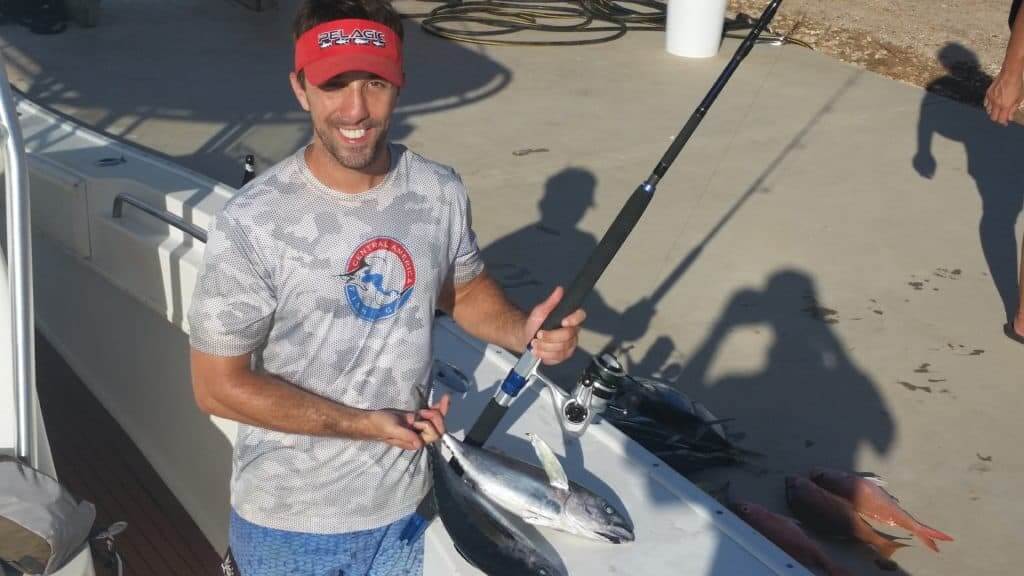
BELIZE: blackfin tuna ~ skipjack tuna ~ yellow jack ~ barracuda ~ king mackerel ~ sierra mackerel ~ silky snapper ~ remora
It was back home to my lake house in northern Wisconsin for the rest of the year as I was getting married in Michigan in September. It was great to spend time with family and old friends and the Midwest is a gorgeous place to be in the late summer and fall, plus it happens to be the best fishing time of year. I certainly fit in my fair share of fishing days here, which is easy to do because it gets dark at 9 PM as opposed to 6 PM here in Central America. The Inshore Travel Rod was a great set up for largemouth bass & pike fishing on inland lakes and I beefed up to the bigger Nomad Travel Rod when targeting muskies, but I didn’t have any luck in that department. The ‘fish of 10,000 casts‘ must think I have a few more to do before I earn a dance. As I traveled back and forth between Wisconsin and Michigan seemingly all summer for various wedding and family festivities, the travel rods were always in the back of the truck with me. What a great feeling knowing that wherever I was I could jump out, get set up, and be fishing within minutes.
WISCONSIN / MICHIGAN: largemouth bass ~ northern pike ~ bluegill
I finally headed back to my adopted home of Costa Rica in November and put the rods through their final and perhaps most anticipated test – inshore fishing for roosterfish. After all, what good is an inshore travel rod if it can’t handle the ultimate inshore prize? To target roosterfish I headed to my favorite beach, Manuel Antonio, and spent a day with my best guide, Johnny. I think he was a bit skeptical that I wanted to use a measly travel rod for roosterfish over his gear, but when he saw how sturdy and well built the Nomad Travel Rod was his reaction was similar to everyone else who saw it for the first time – “Wow. That looks great.” We missed a large snook to start the morning, but I didn’t care, my sole focus on the day was to catch a roosterfish on my travel rod. It didn’t take long as the Z-65S began to scream, I counted to seven, then started to reel to set the circle hook. The way this fish was running I knew it was either a jack or a rooster, and since I didn’t feel the tell-tale head shake of a jack my hopes were high. After about fifteen minutes of rod bending action we saw white beneath the surface, then soon that unmistakable seven-fingered dorsal fin of a rooster broke the surface – mission accomplished! It was only 10 AM so we weren’t going to head in now just because I already completed my goal, we had thirty sardines in the livewell so we ripped up the coastline and various river mouths all day until we left them biting at 4 PM. Needless to say I got spoiled that day and the rods got tested, our finally tally was 7 roosterfish, 15 jacks and to top it all off with a fresh seafood dinner for the night one red snapper.
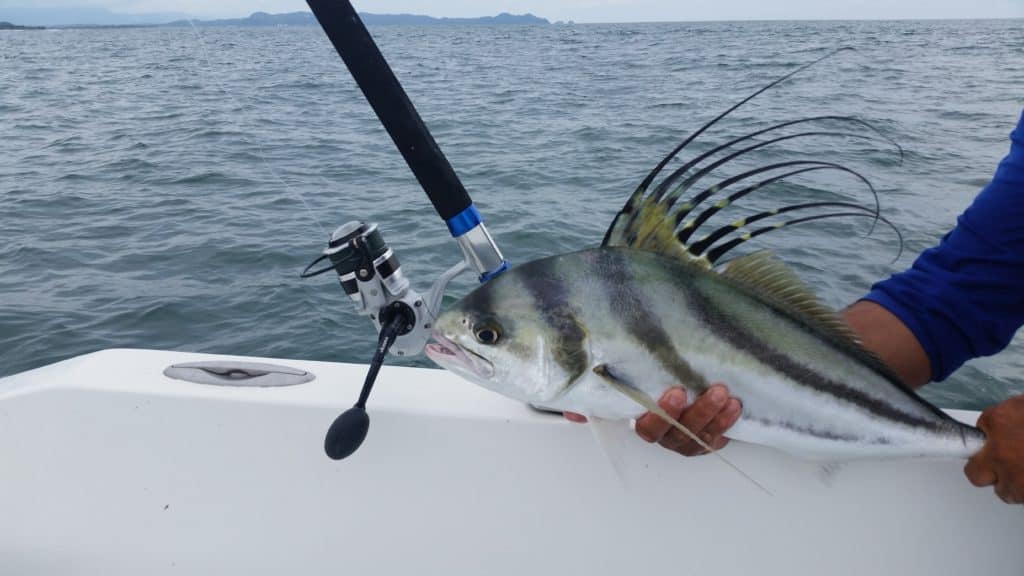
COSTA RICA: Roosterfish ~ Jack Crevalle ~ Red Snapper
In my first year of ownership of these two Okuma Nomad Travel Rods they’ve been to four countries, logged over 19,000 miles of travel, have fished two oceans and two great lakes, and I’ve caught 26 different saltwater and freshwater species on them (so far!). Needless to say I got to know them pretty well with all the QT we spent together in 2016, so here are my final thoughts:
2020 Update on the Okuma Nomad Travel Rods
Everything above in this was written at the end of 2016. Rereading this ‘Fishing Tackle Review – Okuma Nomad Travel Rods’ blog one can certainly pick up on my enthusiasm of finally having three piece rods I can travel with. Over the past four years that novelty has worn off as these have become my go-to rods whether I’m traveling and fishing somewhere new or just on a normal day trip here in Costa Rica. The only change I made was swapping out the small Penn reel for a new Okuma Azores 40s to use on the lighter inshore rod. I love these rods and still have yet to find a fish they can’t whip.
If the stories and species list from above still haven’t convinced you these Okuma Nomad Travel Rods are quality gear and not just a novelty item meant to be used once or twice and discarded, I can show you first hand video proof of how hard I fish these rods. Here at Central America Fishing we offer over 260 options in five countries, but perhaps no fishing trip of ours can put tackle to the test like a week on our 70′ Mothership. In May of 2019 I had the pleasure of hosting the boys from Stoked on Fishing in Panama yet again and we spent six days fishing hard both inshore and offshore. I chose May for them so they could be here during peak yellow-fin tuna season, and this time around I decided I was going to push these travel rods to the limit and see just how much they could handle.
I can proudly say that literally 100% of the fish I caught on this trip where on these very same Okuma Nomad Travel Rods and Okuma Azores spinning reels. This included another 10+ species, but more importantly I fought, and landed, some trophy sized fish on this Okuma rig. The list includes multiple yellow-fin tuna in the 30-70 lb range, a beautiful 50 lb bull dorado, and a trophy 50 lb cubera snapper. My set up was as follows:
Offshore: Okuma Nomad Travel Casting Rod | Okuma Azores Z-65s Saltwater Spinning Reel | 50 lb Power Pro Spectra
Inshore: Okuma Nomad Xpress Inshore Rod | Okuma Azores Z-40s Saltwater Spinning Reel | 30 lb Power Pro Sectra
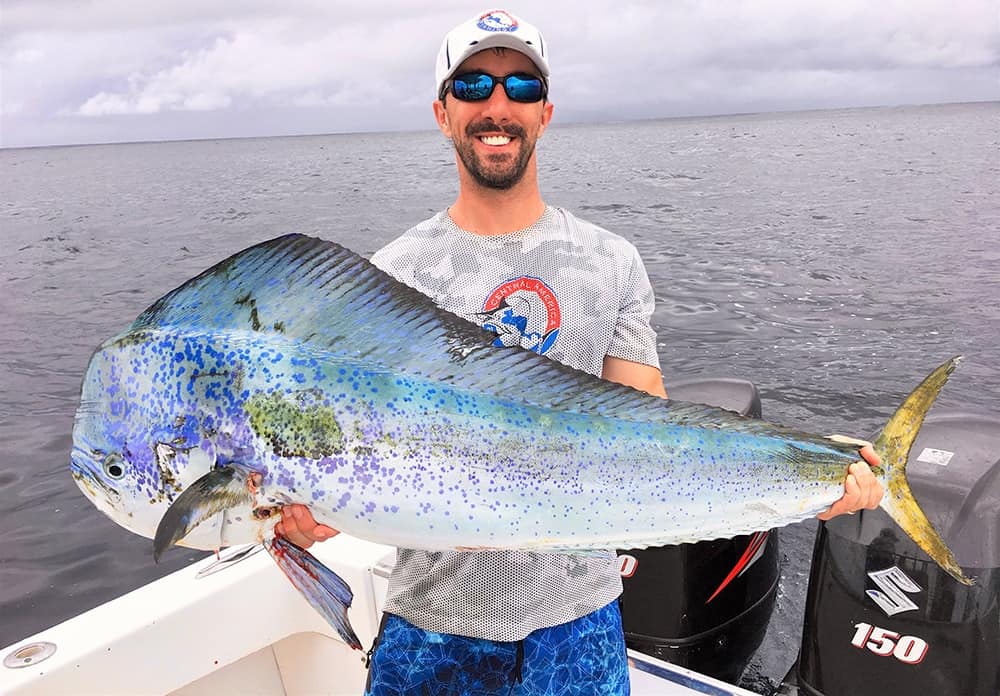
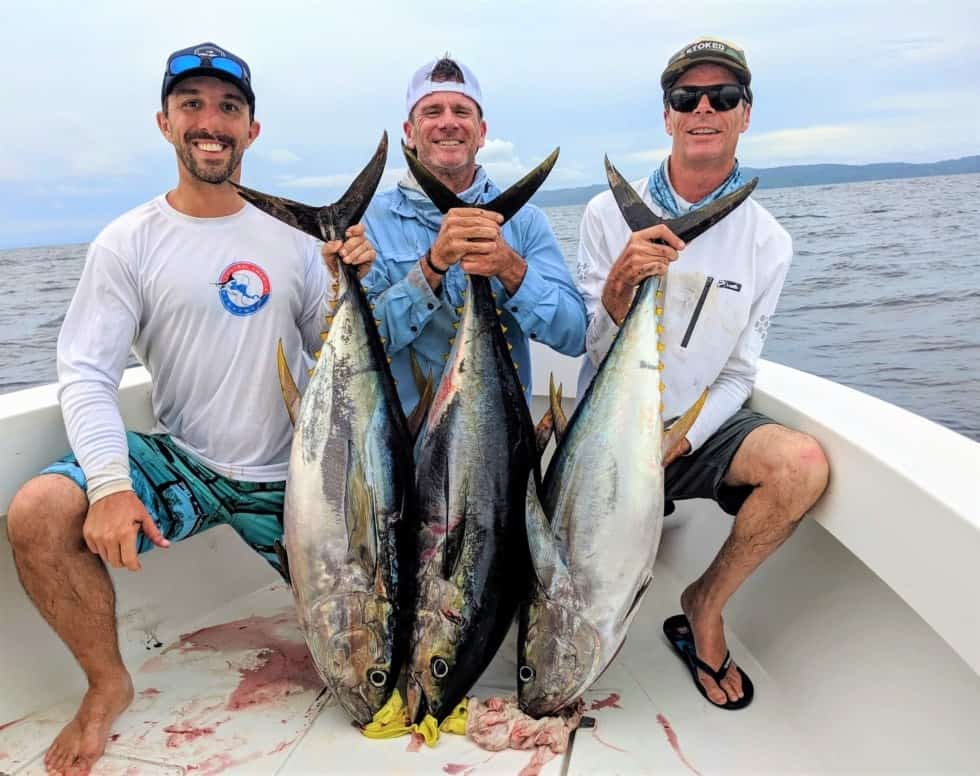
You can view all three episodes and see the rods in action below:
Episode 1 – https://www.youtube.com/watch?v=iczB-6A1Arc&list=PLwh1Y4oKocbjit5OpGmSIYIzIRYCVEK6j&index=2&t=43s
Episode 2 – https://www.youtube.com/watch?v=xudAbDj4GYw&list=PLwh1Y4oKocbjit5OpGmSIYIzIRYCVEK6j&index=3&t=302s
Episode 3 – https://www.youtube.com/watch?v=CdJ-ISFv8BI&list=PLwh1Y4oKocbjit5OpGmSIYIzIRYCVEK6j&index=4&t=0s
What I Love About the Okuma Nomad Travel Rods:
- Each 7 ft rod easily breaks down in to three pieces, weighs under two pounds, and fits in a case that measures 32″ long x 5″ wide. All analysis of a travel rod needs to start there because what’s the point of owning one if it’s too big or heavy to take with you when you travel? It easily fits in overhead bins in planes, inside your checked luggage, or in the trunk of your car/truck bed.
- Each Nomad Travel Rod comes with two different tip sections, one heavy and one light, to give you flexibility and the ability to customize your rod to the specific fishing you are doing. Inshore, offshore, casting, trolling, jigging – do it all.
- Strength. The unique European-style spigot ferrule design really gives these rods a one-piece feel. From offshore pelagics to light tackle inshore fishing, freshwater to saltwater, these rods have yet to come across a fish that even comes close to beating them. Chuck heavy poppers all day or pull giants off the reef, trust that these rods have backbones.
- Durability. These rods have already traveled to more countries than many of my childhood friends and they still look and feel brand new. They are quality made and the cases keep them safe.
- Lifetime Warranty. Okuma stands behind these rods with a limited lifetime warranty, which gives incredible peace of mind when getting yourself into unknown (and sometimes unwise) situations abroad. You’ll fall in love with these rods and you’ll fish more confidently knowing that if anything goes wrong or fails Okuma will replace it for you.
2020 Update on the Lifetime Warranty: On a fishing trip here in Costa Rica in 2018 I was doing some jigging in about 200 ft of water and my line snapped. I figured it must have been a nice cubera that bit me off, so I re-rigged and dropped down again. Before my jig could hit the bottom the line snapped again, and I realized I had a tiny micro-fracture in the eye of one if the guides and it was slicing my 50# braided line. A few weeks later I was back in the US and sent it in for repair to put the warranty to the test. They didn’t ask many questions, told me where to ship it, and just a week or two later I had a new rod in my hands. A warranty that is actually backed up with great service and helpful attitudes is hard to find, these rods are great but the warranty makes them a no-brainer in my eyes.
What Would Make Me Love The Okuma Nomad Travel Rods Even More:
- The case that the Okuma Nomad Travel Rod comes with is well made, waterproof and does offer some padding. I do feel however that the sides could be slightly more sturdy and some foam lining on the inside would protect the rods even more. If you feel that way too that is an easy DIY fix so it’s far from a deal breaker.
2020 Update on the Travel Case: Over time I noticed significant saltwater damage to the zippers on the rod case. This surprised me a little bit because the cases are touted to be waterproof, so one would assume the zippers would be up to the task of saltwater fishing as well. It turns out they really aren’t, I had to replace one of my original cases with a new one when I turned in my rod for warranty in 2018. This too isn’t a deal breaker, just be sure you wash your cases if they get wet or spend enough time around saltwater so this doesn’t happen to you too.
My Final Word
These Okuma Nomad Travel Rods passed the initial international test in 2016 as they traveled nearly 20,000 miles with me and fished two oceans, four countries, and caught 20+ species. Okuma passed the test with flying colors in 2018 for standing behind their warranty and shipping me a new rod when one of the eyes of my original rod cracked. These travel rods gained a whole new level of respect from me after our latest trip to the mothership in Panama with Stoked on Fishing in May 2019 as I battled, and landed 50+ lb fish all week long. Wherever I go, my packing checklist will be ordered so the Okuma Nomad Travel Rods are right after ‘passport’ and ‘credit cards’ and above ‘toothbrush’ and ‘sunglasses’.

![61552555_2227681490630982_5492846379367661568_o-2-980×735 Fishing Tackle Review – Okuma Nomad Travel Rods [Updated in 2020] img](https://www.centralamericafishing.com/wp-content/uploads/2023/09/61552555_2227681490630982_5492846379367661568_o-2-980x735-1.jpg)
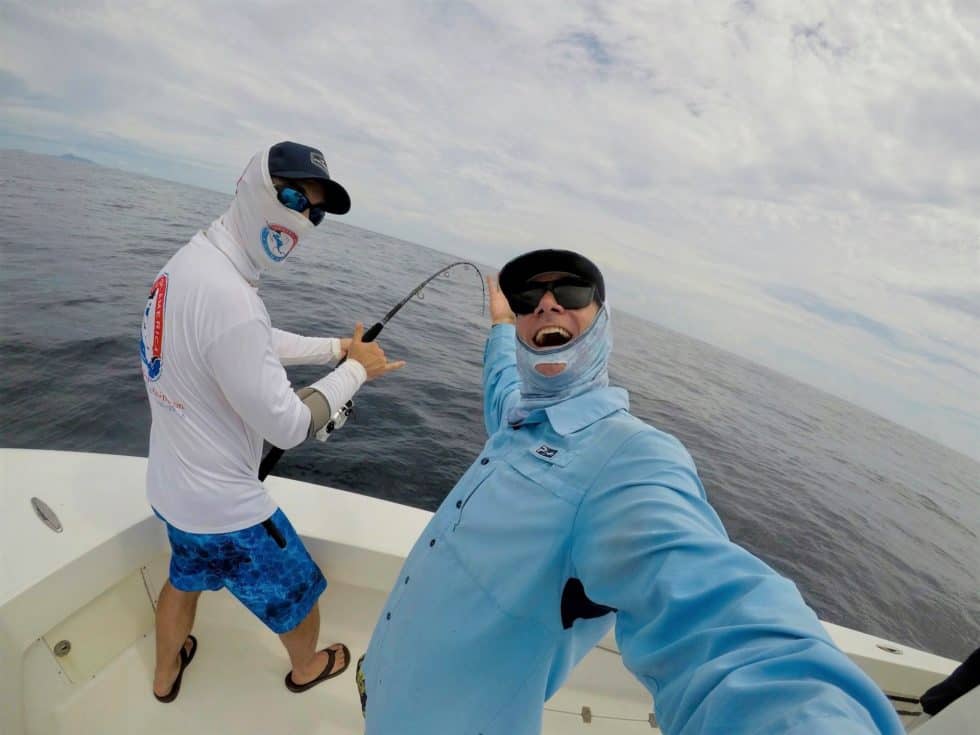
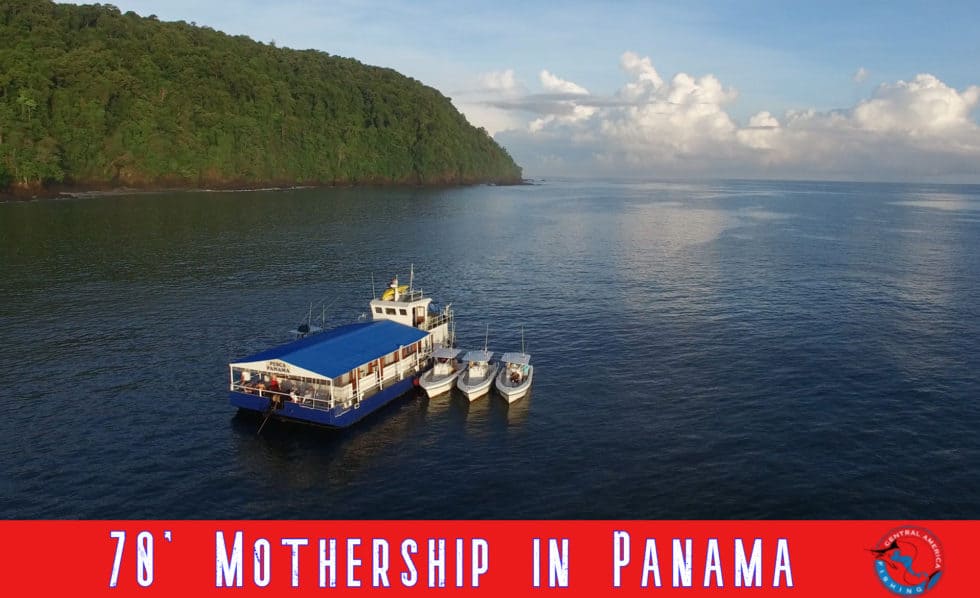
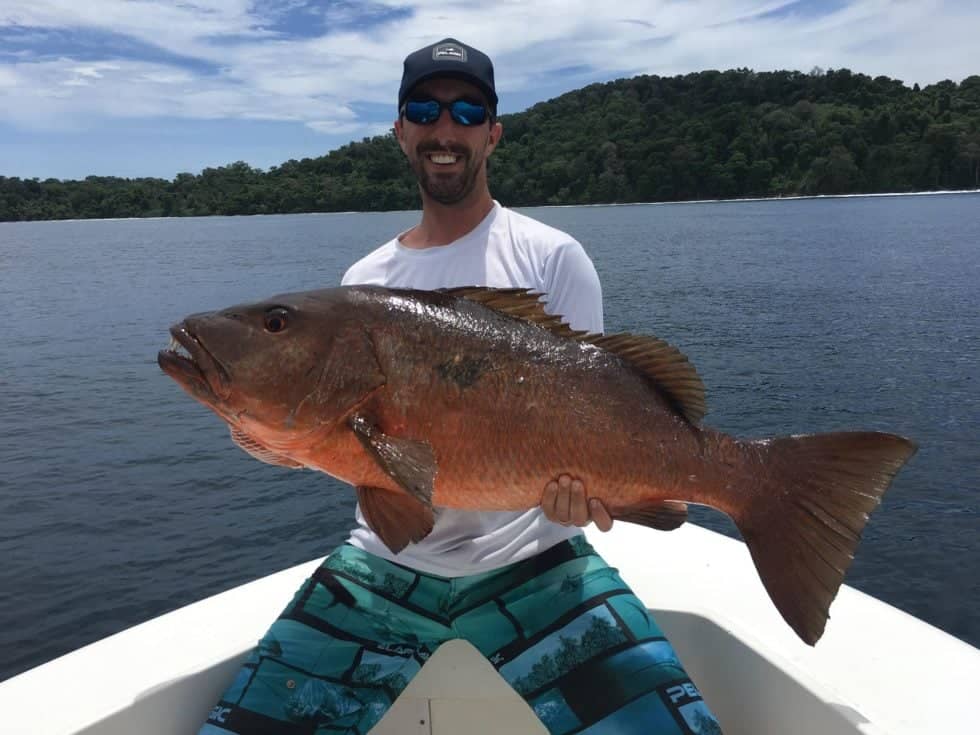
0 Comments